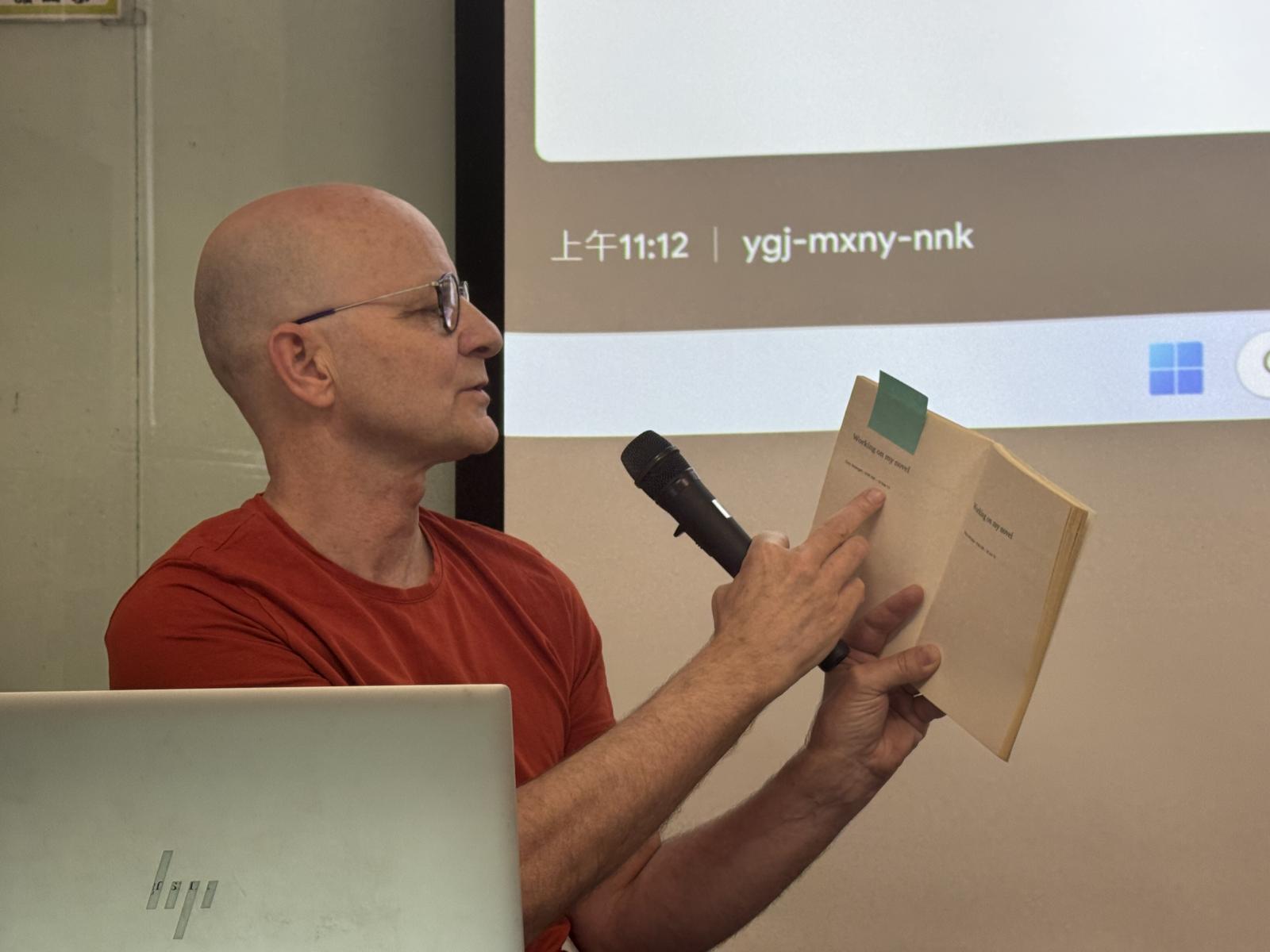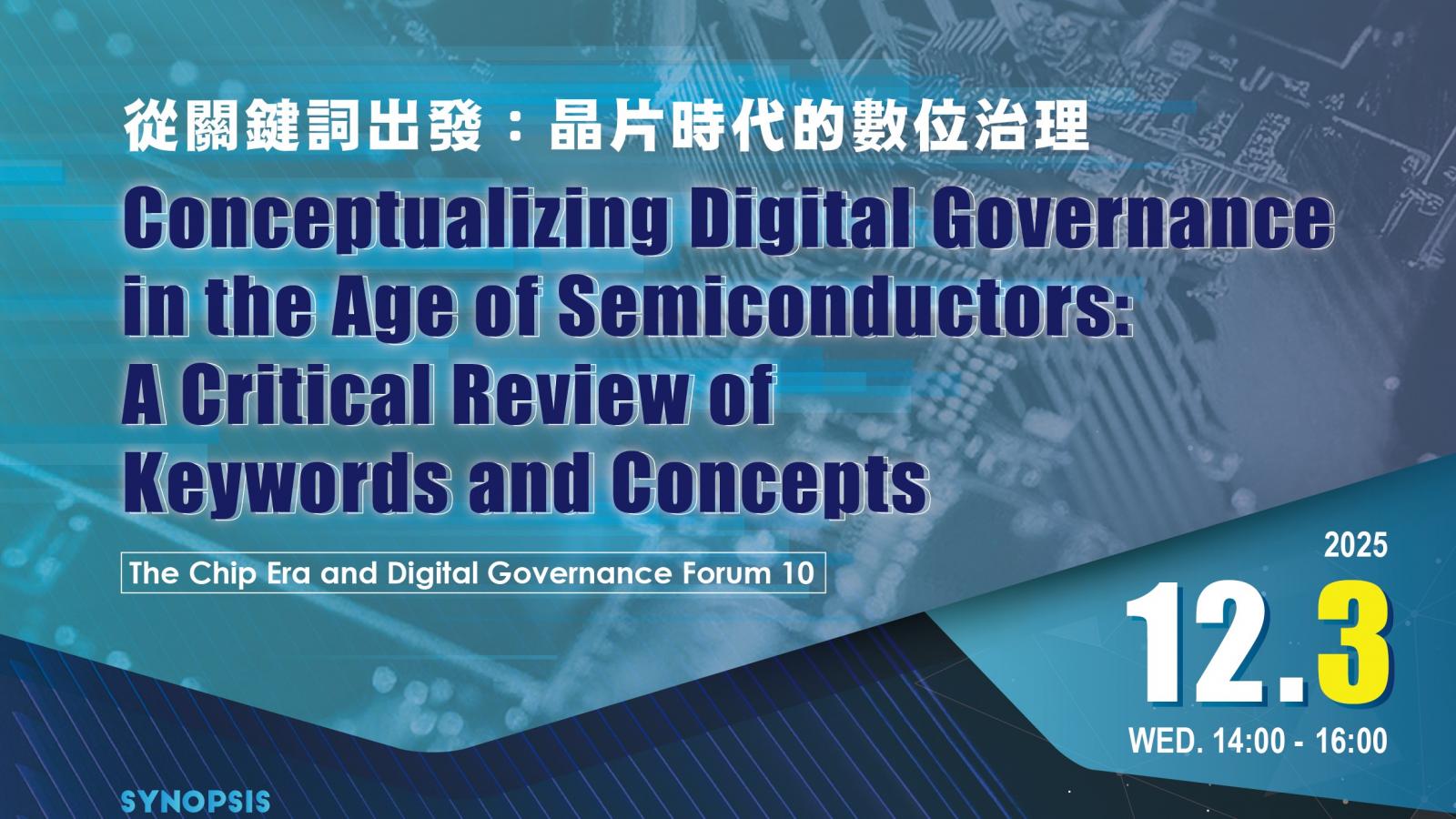

Report|Twitterature: Reassembling the Social as Art
2025-04-17
Topic|Twitterature: Reassembling the Social as Art
Date & Time|17/4/2025, 10:00-12:00
Venue|Room 201, Zhixing Building, Yangming Campus, NYCU
Speaker|Dr. Eivind Røssaak (Associate Professor, the National Library of Norway)
Moderator|Dr. Louis Lo (Associate Professor, Institute of Visual Studies, NYCU)
Respondent|Ms. Grace Cheng (Lecturer, Language Learning and Writing Center, NYCU)
Organizer|National Yang-Ming Chiao-Tung University International Center for Cultural Studies (ICCS-NYCU)
Event Info|連結
Event Photo|連結
Reported by|張協 Sergey Zanchevskiy (IACS)
Sub-project|Social Intervention and Artistic Production
Convener|Wen-Shu Lai

On April 17 (Thursday), Dr. Eivind Røssaak, a film and media researcher, delivered a lecture on the phenomenon of Twitterature, i.e., literary writings that employ the constraints of early Twitter (now X). Specifically, he discussed Cory Arcangel’s Working on My Novel (2014), a Twitter novel that problematizes the distinction between old and new media.
First of all, Dr. Røssaak started his talk by introducing his research background and most recent academic activity. Røssaak began his path as a literature scholar, but later expanded his field to the study of media in general, focusing on the juxtapositions between different types of media: book and film, analogue and digital, along the way exploring how shifts in technologies influenced our archival practices. His ongoing project aims to investigate the history of inscriptions “from stone to stone”, namely, from the earliest epigraphs to the use of computers, whose functionality is based on silicon microchips. This lecture is tied to the upcoming release of his book, The Cory Arcangel Hack: Digital Culture and Aesthetic Practice, which will be published at the end of the year.
Twitterature as an experimental literary form appeared in 2008, almost right after the creation of Twitter (that is, 2006). Its essence is determined by the limitations of the social network platform, i.e., the number of characters was first limited to 140, and then, in 2017, to 280 in one “tweet” (or “post”), which imposes a creative challenge on the author. Røssaak argues that the word limit is based on a “constrained writing technique”, similar to what the French literature movement Oulipo advocated in the 1960s, with Georges Perec’s Life: A User's Manual (1978) as an example. Besides, this experiment also challenges the boundaries of the medium: is it a type of text that should be published and read online, or can it also be printed out as a book? Cory Arcangel, a contemporary artist, addresses this issue by presenting a physical book entitled Working on My Novel, which is a compilation of tweets from other people.
Arcangel’s art, using hacking devices, examines how machines and people who use these machines tend to express themselves. Following this notion, Arcangel developed a bot that would automatically collect tweets that mention the phrase “working on my novel” so that the artist can arrange them into a novel-length book. As a result, Arcangel gathered 120 tweets posted between 2011 and 2013, while each of them has a similar structure: the authors of the tweets described how they work on their novels while doing something else (“watching doctor who” or “chillin by the water” (Arcangel, 2014); Working on My Novel, however, emphasizes another important activity – they are also writing in the Twitter. Dr. Røssaak explains that this collection of short statements makes the pressure exerted on humans by technology, such as social media, visible; therefore, Arcangel’s “novel” is full of anxiety and, indeed, attracts readers’ sympathy: people try to write their novels but cannot, being distracted by various obstacles, including internet platforms.
To understand more about the phenomenon of Twitterature and Arcangel’s work in particular, Røssaak refers to many relevant theories, such as Wendy Hui Kyong Chun’s idea of the habituality of “new” media that requires us to be constantly updated (2016); Gilles Deleuze’s concept of “flow”, which in our days becomes electronic, digital (Deleuze & Guattari, 1972); Friedrich Kittler’s distinction between the symbolic and the real in relation to media (1999); and Bruno Latour’s actor-network theory (2005) that, according to Røssaak, is crucial when analyzing online interactions. Based on this foundation, Dr. Røssaak proposes his own terminology to access Cory Arcangel’s art: flow-break, flow-remix, and flow-parody, thus constituting different types of hacking employed by the artist. Among these “flow-cut arrangements”, as the scholar names them, Røssaak suggests using flow-remix to interpret Working on My Novel: the artist “cuts” the fast flow of the microblog, selects relevant parts of it, and then re-arranges (“remixes”) them into another, much “slower” flow – that of a novel. By doing this, he, in a sense, completes the task: he “wrote” a novel, without really writing it.
In conclusion, Dr. Røssaak invites us to compare Arcangel’s ideas with the reflections of Roland Barthes, which he expressed during his last, most intimate lectures. In this series of talks, later collected in a book entitled The Preparation of the Novel (2010), Barthes meditated on his desire to write a novel and the struggles that appeared in front of him, primarily the impossibility of writing the Text in a world full of texts and signs. Røssaak argues, however, that Arcangel’s book tries to solve this problem by mocking the medium itself, making “the novel” parodiable.
Bibliography
Arcangel, C. (2014). Working On My Novel. Penguin UK.
Barthes, R. (2010). The Preparation of the Novel: Lecture Courses and Seminars at the Collège de France (1978-1979 and 1979-1980) (K. Briggs, Trans.; p. 512 Pages). Columbia University Press.
Chun, W. H. K. (2016). Updating to Remain the Same: Habitual New Media. The MIT Press. https://doi.org/10.7551/mitpress/10483.001.0001
Deleuze, G., & Guattari, F. (1972). Anti-Oedipus: Capitalism and Schizophrenia. http://archive.org/details/anti-oedipus
Kittler, F. A. (1999). Gramophone, Film, Typewriter | Stanford University Press (G. Winthrop-Young & M. Wutz, Trans.). https://www.sup.org/books/media-studies/gramophone-film-typewriter
Latour, B. (2005). Reassembling the social: An introduction to actor-network-theory. Oxford University Press.
近期新聞 Recent News



New Publication | Writing against Occupation: Palestine and Beyond (CJD Booklet No.6)
2025-11-12
more